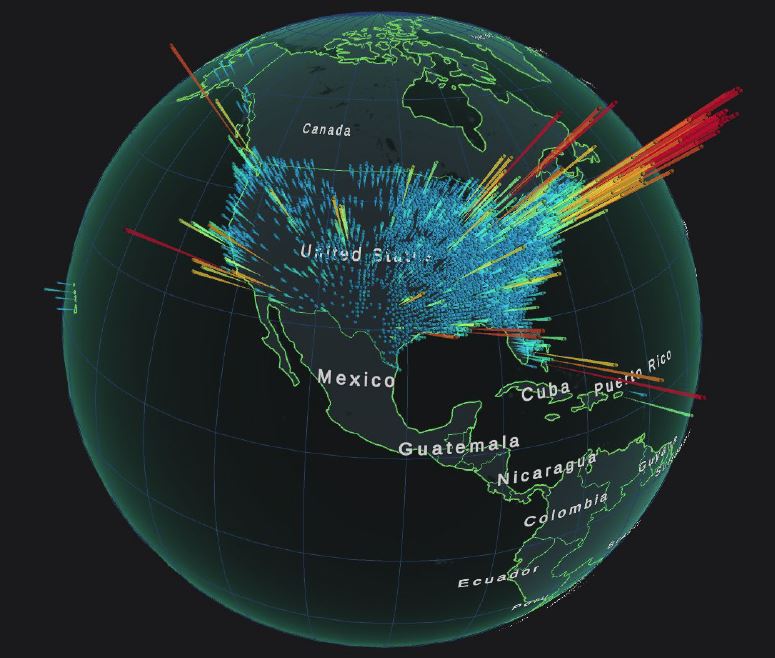A virtualitics Heat Map shows current COVID-19 cases.Through a partnership with the Cyber Innovation Center, Louisiana Tech University, and Virtualitics Inc., Air Force Global Strike Command officials rapidly developed a daily report consisting of infection rate projections based on a COVID-19 Susceptible, Exposed, Infected, Resistant (SEIR) model. (Courtesy Graphic)
By Capt. Earon Brown | Air Force Global Strike Command Public Affairs
BARKSDALE AIR FORCE BASE, La. — Air Force officials here responsible for two-thirds of the nation’s nuclear weapons enlisted a new partner in the fight against COVID-19—academia and industry.
Through a partnership with the Cyber Innovation Center, Louisiana Tech University, and Virtualitics Inc., Air Force Global Strike Command officials rapidly developed a daily report consisting of infection rate projections based on a COVID-19 Susceptible, Exposed, Infected, Resistant (SEIR) model.
The team began by modeling virus infections in counties surrounding the command’s 10 main operating locations in order to determine local spread of the virus, which could also impact readiness and force posture. The goal was to provide current and accurate data informed by subject matter experts, which has aided command and installation leadership in decision making and determining how to best plan for operations now, and in the future—regardless of what the virus does.
New bonds have been forged in scientific and technical relationships inside the Air Force, specifically in this command which launched a new strategy focused on innovation. Since inception, the model projections are being used to also support Air Combat Command and Air Forces Northern leadership teams in understanding virus spread patterns and determining response measures. The novel coronavirus outbreak is a faceless enemy that AFGSC, ACC and AFNORTH is modeling and reporting on a united front.
“We cannot wait for the virus to slow down so we can take our time developing tools. We must use the best information available to us now to maintain readiness and keep our force healthy, in order to assure the nation, our allies and partners that the command remains ready to respond anytime, anywhere,” said Col. Virginia Garner, AFGSC Command Surgeon. “And the way we’re doing that right now is by making data-driven decisions.”
Each day, COVID-19 data from Air Force operational channels, the Centers for Disease Control and Prevention, and John Hopkins University is provided to LA Tech and Virtualitics researchers. Together, they sort and structure the data to use as input for their visualization or model, analyze the data for insights, and generate the reports.
These reports are then disseminated to AFGSC, ACC and AFNORTH for leaders to review the data and understand changes in current and projected situations at 59 bases and their communities within the respective commands.
This rapid and agile response capability was only made possible by AFGSC’s previously established partnerships through its Partnership Intermediary Agreement (PIA) with the CIC. Conversations between AFGSC, LA Tech, and Virtualitics Inc. started March 24, with the first report and modeling of 10 AFGSC bases and the Bossier City and Shreveport communities being generated just days later on March 26.
This endeavor is only one example of the command’s goal to innovate and use data to make the command more lethal and ready, providing the right impacts at the right time.
“We are beginning to experience the immense value, agility, and potential of our innovation partners responding to unprecedented and unforeseen planning needs,” said Dr. Donna Senft, AFGSC Chief Scientist “The command is ready and eager to continue channeling this potential into other innovative efforts with a forward leaning posture to stay at the innovation forefront.”


